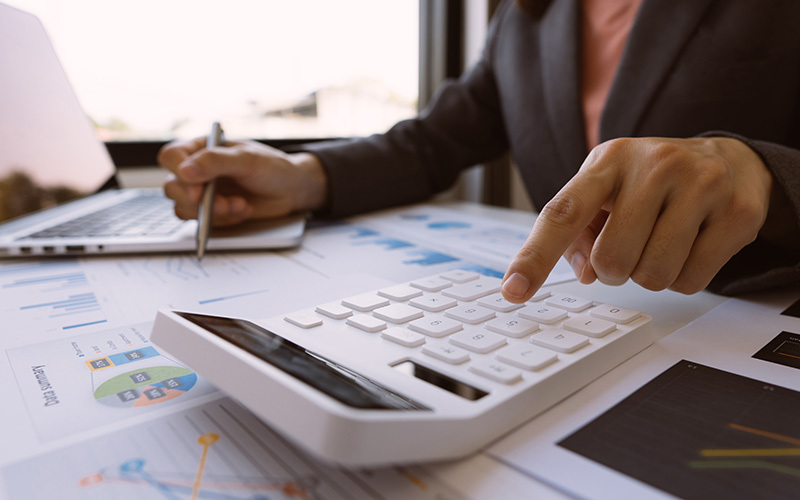A well-organized balance sheet can save you from the hassle of sifting through emails and receipts, especially during tax season. It’s also essential when securing loans or funding for your business. In this article, we’ll explore the balance sheet, its components, and its limitations.
What is a Balance sheet?
A balance sheet is a financial statement that displays a company’s assets, liabilities, and shareholder equity, typically on a monthly or quarterly basis.
Simply put, a balance sheet provides a snapshot of what a business owns and owes.
Assets = Liabilities + Shareholder’s Equity
This formula shows that a company’s assets are funded either by borrowing (liabilities) or through investor contributions (shareholder’s equity).
For example, if a business takes a loan of ₹4,000, its assets increase by ₹4,000, as do its liabilities. Similarly, if the business receives a ₹4,000 investment, assets increase by ₹4,000, and shareholder equity increases by the same amount.
This equation offers a real-time view of a business’s cash flow. Now, let’s dive deeper into each component.
What are the components of a balance sheet?
A balance sheet comprises three components:
- Assets
- Liabilities
- Shareholder’s Equity
Let’s understand each component of the balance sheet in detail.
Assets
Assets can be tangible like inventory, buildings, or machinery that a company owns or Intangible like intellectual property, goodwill, patents, copyrights, and trademarks.
Assets should always equal the sum of liabilities and shareholder equity; any discrepancy indicates calculation errors. Assets are divided into two categories:
Current assets – Current assets are those that are expected to be converted into cash within a year. These assets are crucial for a business’s short-term liquidity needs.
- Cash
- Inventory
- Prepaid expenses
Non-current (long-term) assets – These assets are not expected to convert to cash within the next year and generally support long-term growth and operations.
- Patents, copyrights
- Long-term investments
- Equipment and property
Liabilities
Liabilities represent the obligations of the company, or what it owes to outside parties. They are split into current liabilities and non-current liabilities.
Current liabilities – These are obligations or expenses the company must settle within one year.
- Short-term debt
- Interest payable
Non-current (long-term) liabilities – These are long-term obligations that extend beyond one year.
- Long-term debt
- Lease liabilities
Shareholder Equity
Shareholder equity is the money attributed to the owner of the company, calculated as:
Total Assets – Total Liabilities = Shareholder’s Equity
For example, with ₹20,000 in assets and ₹10,000 in liabilities, shareholder equity would be ₹10,000. As assets grow and liabilities shrink, shareholder equity increases.
In the early stages, it’s common for businesses to have negative shareholder equity, where liabilities outweigh assets.
What is the importance of a balance sheet?
Regardless of business size, maintaining an accurate balance sheet is essential. Here’s why:
Assesses financial risk
A balance sheet provides insights into your financial stability. It shows if the business has taken on excessive debt or lacks sufficient cash reserves, helping you identify and prepare for financial risks early.
Attracts loans and investors
A solid balance sheet is crucial for securing loans or attracting investors. Both lenders and investors evaluate your business’s financial health to assess its viability and growth potential.
Supports financial planning and timely payments
By monitoring assets, liabilities, and cash flow, a balance sheet helps you plan finances more effectively, ensuring bills are paid on time and improving overall financial management.
Limitations of Balance sheets
While balance sheets are essential for understanding a business’s financial position, they do have limitations:
Incomplete picture of financial health
A balance sheet alone may not provide a complete view; cash flow statements are also necessary to track actual liquidity and operational cash flow.
Depreciation and asset valuation
Balance sheets may not fully reflect depreciation and amortization of assets, as these values are recorded at cost and adjusted for depreciation, potentially misrepresenting actual asset value over time.
Challenges with intangible assets
Assigning value to intangible assets like patents, trademarks, and goodwill is challenging and can be subjective, often leading to inconsistencies in valuation.
Exclusion of operating leases
Some off-balance-sheet items, such as operating leases, aren’t included, which can underrepresent a company’s true liabilities and obligations.
Historical cost
Assets are typically recorded at their original purchase cost, not at current market value, which can be misleading, especially for businesses with long-held assets that may have significantly appreciated or depreciated.
These limitations highlight the need to use balance sheets alongside other financial statements for a fuller picture of a business’s financial health.
Wrapping up
Maintaining a balance sheet is essential for every business, even in the early stages. The sooner you start, the stronger your business’s financial foundation will be. A well-organized balance sheet helps you make quick, informed decisions, secure loans and investments faster, and keep your finances organized.

